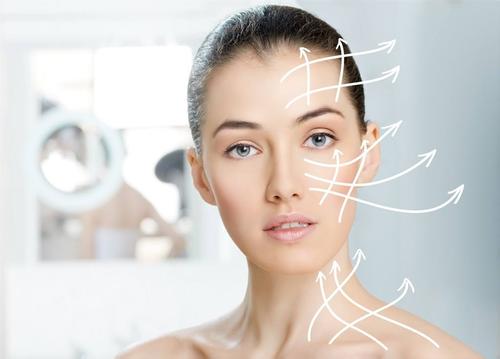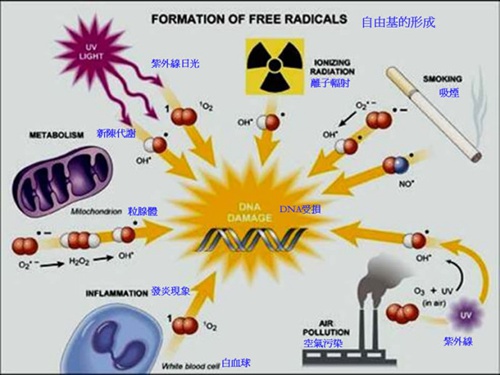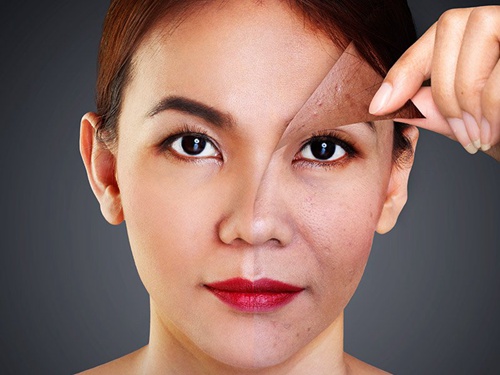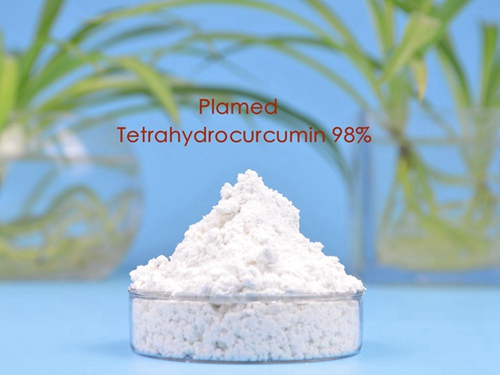Plamed Engineer Bai has been studying tetrahydrocurcumin for many years. He discusses differences between curcumin and tetrahydrocurcumin in many respects. Tetrahydrocurcumin is the most powerful curcuminoids metabolite. It can be used for skin care. This article aims to help you better understand differences between curcumin and tetrahydrocurcumin.
1. Source
Curcumin is extracted from curcuma longa root. The market specification is 95%. Tetrahydrocurcumin is obtained by further hydrogenating curcumin. Tetrahydrocurcumin is a kind of turmeric powder which is the most effective derivate of curcumin. The common market specification is 98%.
2. Molecular Structure
Tetrahydrocurcumin has no unsaturated C=C double bonds compared to curcumin. It lacks the conjugated double bond that chromophore need. So tetrahydrocurcumin appears white powder.
Because of the unsaturated C=C double bond, if curcumin is stored for a long time or during heating process of health care product, the bond may be oxidized or broken by high temperature. It directly affects the efficacy of curcumin.

3. Stability
Tetrahydrocurcumin is superior to curcumin in high temperature stability.
Because of this, the bioavailability of tetrahydrocurcumin is much higher than that of curcumin. Curcumin is not easily absorbed and transformed through the gastrointestinal tract. Thus, it has many limitations in clinical applications.
Therefore, Tetrahydrocurcumin is considered to have a better pharmacological effect than curcumin due to its chemical stability and higher anti-oxidation property.
4. Tetrahydrocurcumin Benefits for Skin
Compared with curcumin, tetrahydrocurcumin is more stable, and has higher antioxidant activity. So its bioavailability is higher than curcumin. Tetrahydrocurcumin uses is more extensive, but the basic effects are same.
(1) Whitening
Tetrahydrocurcumin can effectively inhibit tyrosinase. It slows down melanin formation. And it is more effective than other whitening agents such as kojic acid, arbutin, and vitamin C. At the same time, tetrahydrocurcumin ‘s powerful antioxidant activity of can also delay the formation of melanin. Thereby it brightens skin and exerts a whitening effect. A study is randomized by double-blind, placebo-controlled trial of 50 subjects. The researchers found that in whitening formulations, 0.25% tetrahydrocurcumin cream is more effective and safer than 4% hydroquinone cream.

(2) Anti-oxidation
Free radicals on skin surface are caused by UV rays, chemicals or other factors that catalyze skin aging. Tetrahydrocurcumin scavenges free radicals and prevents the formation of free radicals. In addition, tetrahydrocurcumin can inhibit the proliferation of free radicals; also it inhibits the oxidation of fat. Therefore, tetrahydrocurcumin can be added as a natural antioxidant to extend the shelf life of cosmetics.

(3) Anti-inflammation
Tetrahydrocurcumin has a broad-spectrum anti-inflammatory and antibacterial effect. It can repair skin inflammation and skin damage caused by UVB. It can more effectively relieve pain and swelling, and has a significant effect on treatment of mild burns, skin inflammation and acne scars.

(4) Repairing wound
Tetrahydrocurcumin is demonstrated to promote the production of transforming growth factor- beta (TGF-β), collagen and the regeneration of epidermal cells.
5. Tetrahydrocurcumin Uses
Because curcumin is yellow and low in cost, it is often used as an active ingredient in health care products and functional foods, or as a natural coloring agent in foods.
The anti-inflammatory function of tetrahydrocurcumin combined with its high-efficiency antioxidant effect makes it an effective ingredient in anti-aging and whitening cosmetics. Therefore, Tetrahydrocurcumin is used in high-end cosmetics.
Compared with yellow curcumin (also turmeric root extract, tetrahydrocurcumin is one of hydrogenated derivatives), Plamed tetrahydrocurcumin is white powder; it is more suitable for preparation into cosmetics.
INCI Name: TETRAHYDRODIFERULOYLMETHANE

6. Tetrahydrocurcumin Using Tips in Cosmetics Formulation
- Adopt stainless steel vessel when preparing cosmetics; avoid contact with metals, such as iron and copper;
- Dissolve first using a solvent, then add to emulsion at 40°C or lower temperature;
- The pH of the formulation is recommended to be slightly acidic, preferably between 5.0 and 6.5;
- Tetrahydrocurcumin is very stable in 0.1M phosphate buffer;
- Tetrahydrocurcumin can be gelled by using thickeners including carbomer, lecithin;
- Suitable for preparation into skin care products such as creams, gels and lotions;
- Act as preservative and photo-stabilizers in cosmetic formulations; the recommended dosage is 0.1-1%;
- Dissolve in ethoxydiglycol (a penetration enhancer); partially soluble in ethanol and isosorbide; soluble in propylene glycol at a ratio of 1:8 at 40°C; insoluble in water and glycerin.
7. Tetrahydrocurcumin Dosage in Cosmetics
| Application | Recommended dosage |
| Anti-aging and anti-oxidation | 0.1-0.3% |
| Skin- Lightening | 0.3-0.5% |
| Skin-Whitening | 1% or so |
Plamed aims to develop natural cosmetics raw materials. Plamed tetrahydrocurcumin is white color, high content, and low cost. more details about tetrahydrocurcumin, please click into: Tetrahydrocurcumin.
If you want to buy tetrahydrocurcumin, please contact us in following way.

Rae Wong
Tel: +86-29-8821 5350
Mobile: +86 180 6683 3765
Email: sale@plamed.cn
Whatsapp: +86 180 6683 3765
Skype: plamed06
Wechat: 18066833765








